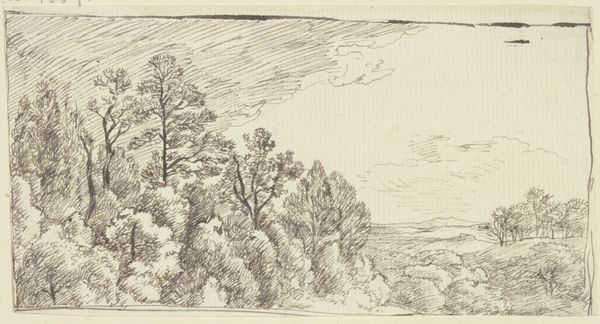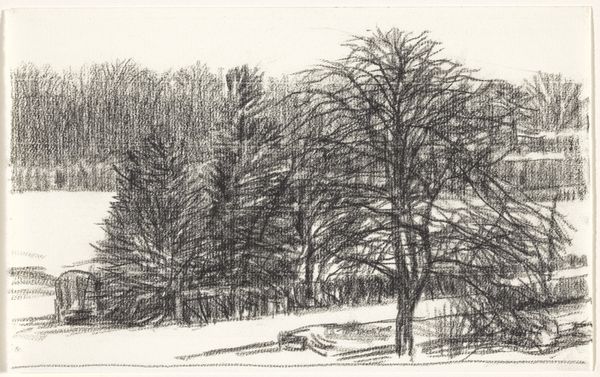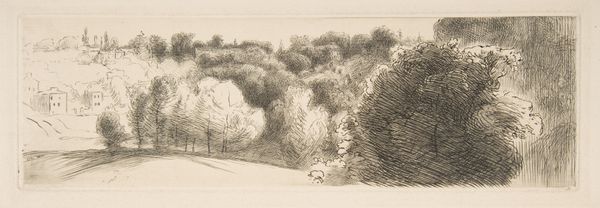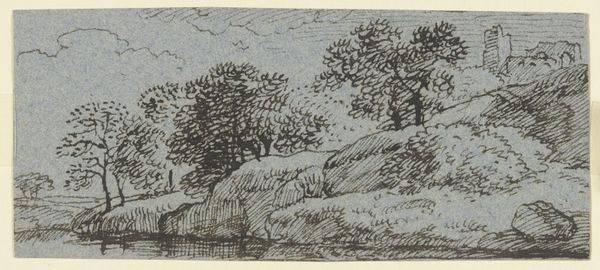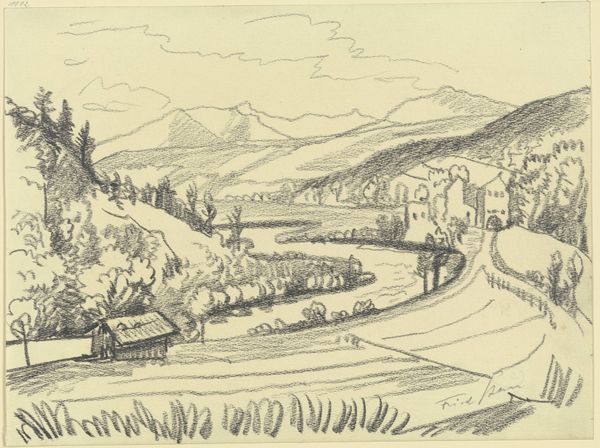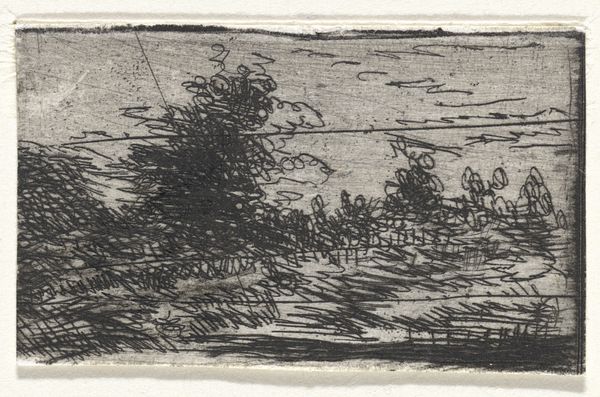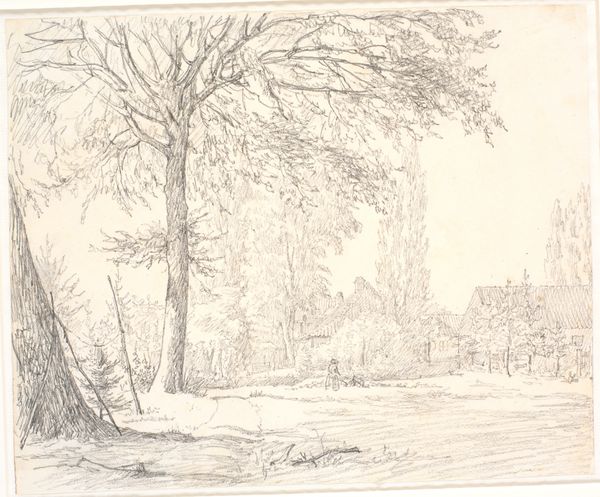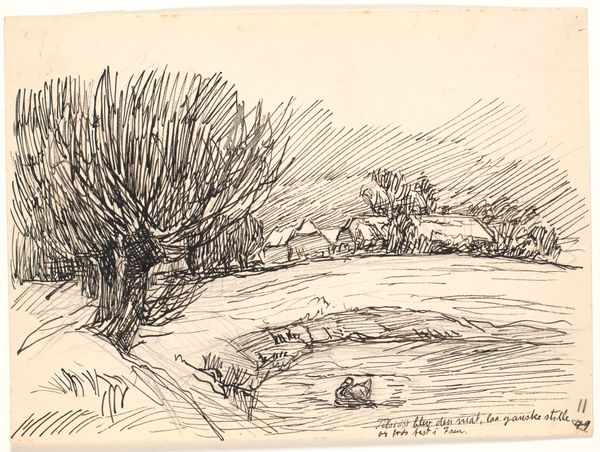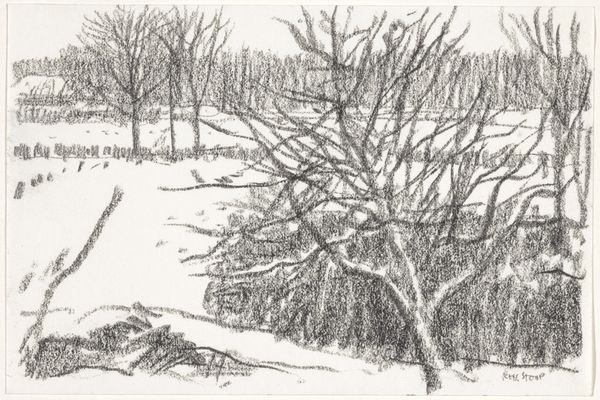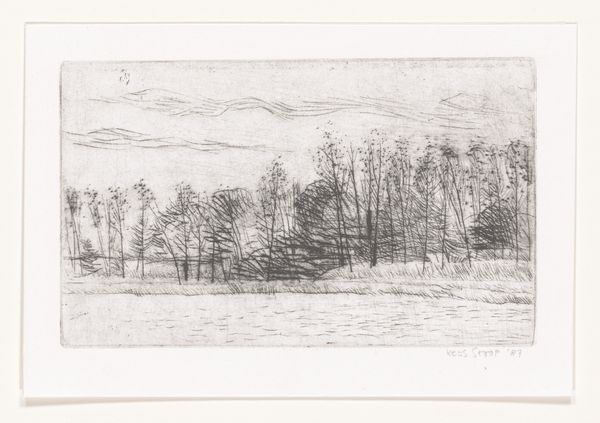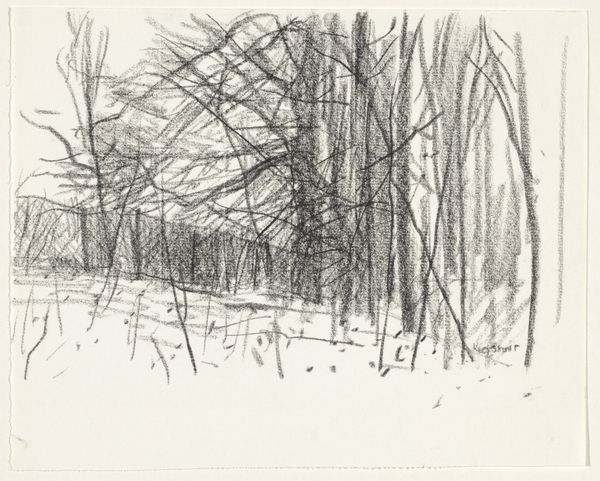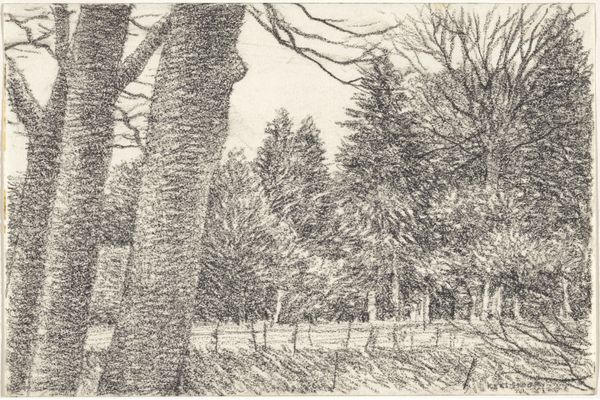
drawing, print, paper, ink, pencil, woodcut
#
drawing
# print
#
pencil sketch
#
asian-art
#
landscape
#
paper
#
ink
#
pencil drawing
#
pencil
#
woodcut
Dimensions: 11 7/8 x 24 3/4 in. (30.2 x 62.9 cm)
Copyright: Public Domain
Editor: So this is Gong Xian's "Landscapes of the Twelve Months," likely created between 1675 and 1695. It’s an ink and pencil drawing and woodcut print on paper, at the Met. It has such a stark and contemplative mood; what stands out to you in this piece? Curator: For me, it is a poignant visual statement embedded within a tumultuous historical context. Gong Xian lived through the fall of the Ming dynasty and the rise of the Qing. Consider the deliberate choice to depict landscapes devoid of overt human presence or imperial grandeur. Aren't these muted tones and almost desolate scenes reflecting a subtle form of resistance, a lament for a lost cultural and political order? What do you make of the bare trees and muted colors? Editor: They feel bleak, almost like a visual representation of loss, but maybe also resilience? Is it right to see a political dimension, a form of silent protest, in landscape art from this period? Curator: Absolutely. Remember that during dynastic transitions, artists often used landscape as a coded language. By turning away from the explicit depiction of power, they could express dissent and longing for a past era. Also, it’s interesting to note that Gong was one of the Eight Masters of Nanjing; do you think belonging to this artistic group contributed to the dissident sentiment found in his artworks? Editor: It makes sense. Being part of such an art group could strengthen feelings like that through shared creative vision, perhaps creating a counter-narrative within the dominant culture of the time. I hadn't really considered art as a tool of historical commentary so directly before. Curator: Exactly, seeing art as embedded with political undertones truly shifts how we engage with historical contexts. It helps us reveal power structures and intersectional dynamics within these landscapes. Editor: I agree. Thinking about Gong Xian's work in this way definitely provides new ways to contextualize it!
Comments
No comments
Be the first to comment and join the conversation on the ultimate creative platform.
